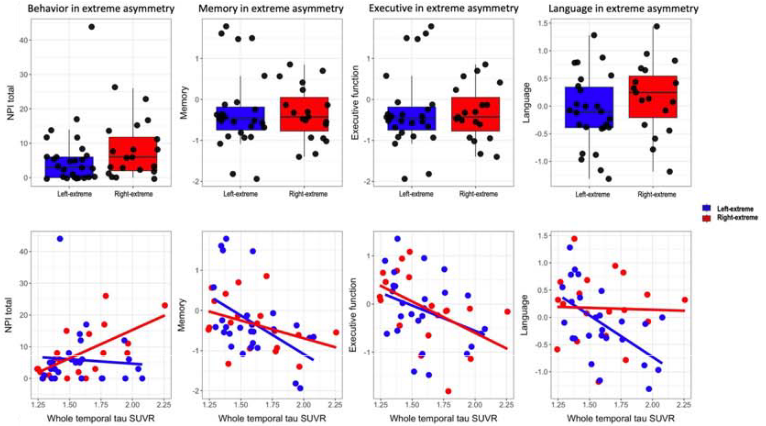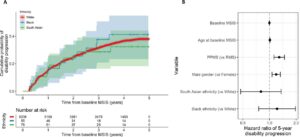Kyan Younes, et al. – Stanford University.

Background: While asymmetric tau burdens have been studied in atypical AD, their presence in typical AD remains unexplored.
This Study: In a cohort of 858 subjects from the Alzheimer’s Disease Neuroimaging Initiative (ADNI) dataset, 47 showed extreme asymmetry in the buildup of tau within the temporal lobe, with 20 biased towards the right lobe and 27 biased towards the left. These values are in line with the definition of “extreme asymmetry” being more than 2 standard deviations away from the mean on an asymmetry index of (left – right)/(left + right). For subjects with extreme right-biased asymmetry, increased total temporal tau burden correlated with worse behavioral and emotional symptoms, whereas for those with left-biased asymmetry, higher total temporal tau correlated with greater language deficits. In contrast, increased total temporal tau correlated with worse memory and executive function in both groups, indicating a selective role for tau asymmetry in certain cognitive domains.
Bottom Line: The degree of asymmetry in tau buildup may be predictive of worse symptoms in particular aspects of cognition, making it an important element of screening patients. This may represent a domain in which fluid biomarkers will not be an adequate substitute for imaging, unless there are markers specific to the lateralization of tau buildup. It is important to note, however, that the overwhelming majority of subjects in this study have not yet developed AD; only 1 member of the extreme asymmetry group had an AD diagnosis, with most experiencing mild cognitive impairment (MCI). Thus, these findings should be considered as specifically relevant to MCI, with follow-up studies needed to explore the role of asymmetry in AD.




